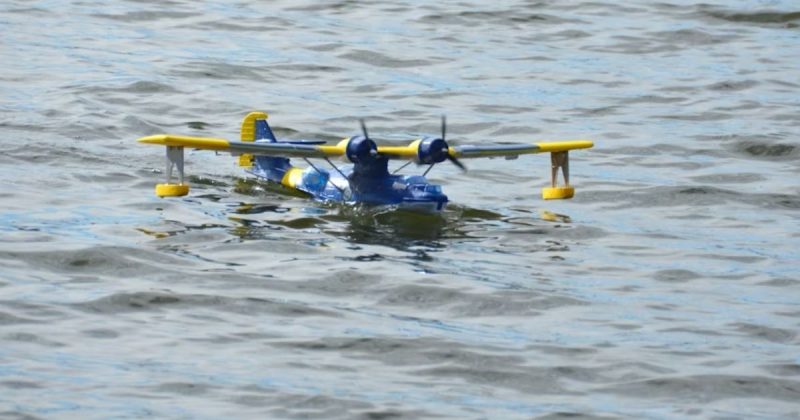The realm of underwater exploration is being transformed by drones that integrate cutting-edge robotics with high-resolution imaging. Environments once considered inaccessible or hazardous—ranging from deep ocean trenches to remote lake beds—can now be observed and documented with remarkable ease.
These drones offer unprecedented opportunities across multiple fields. Professional researchers can gather critical ecological data, recreational divers can experience underwater landscapes in new ways, and filmmakers can capture cinematic footage, all while gaining deeper insights into the aquatic world.
How Underwater Drones Work
Underwater drones, often referred to as remotely operated vehicles (ROVs), are engineered to navigate and document aquatic environments with precision. At their core, these devices combine waterproof housings with sophisticated propulsion systems, allowing them to move seamlessly in three dimensions underwater. Operators control the drones either through tethered cables—which provide uninterrupted communication and power—or via wireless connections that offer greater freedom of movement in shallower waters.
Contemporary underwater drones utilize advanced stabilization systems to reduce camera shake, producing smooth, professional-grade footage. Many models are outfitted with sonar mapping technology, allowing for precise navigation in murky waters or complex underwater landscapes. High-end units often include low-light imaging, enabling clear capture even in dim or turbid conditions. Additional sensors can monitor temperature, pressure, or salinity, making these drones invaluable not only to filmmakers and hobbyists but also to researchers studying marine ecosystems. The integration of precise control, high-quality imaging, and environmental monitoring makes underwater drones a versatile and effective tool for safe exploration of aquatic environments.
Applications in Science and Research
Underwater drones have become invaluable tools for marine science and ecological research. Marine biologists and oceanographers use them to study delicate underwater ecosystems without the risk of human interference. For example, drones can monitor coral reef health, track fish populations, and observe the behaviors of marine species in their natural habitats, all while minimizing disruption to the environment.
Beyond observation, these drones enable the collection of high-resolution imagery and environmental data over extended periods and in areas that may be dangerous or inaccessible to divers. Parameters like water temperature, salinity, and depth can be recorded in real time, helping researchers understand the impacts of climate change, pollution, and human activity on marine ecosystems. By reducing reliance on human divers in hazardous or deep-water locations, underwater drones enhance both the safety and efficiency of scientific research, making it possible to conduct more comprehensive and precise studies than ever before.
Recreational and Cinematic Uses
A whole new dimension of underwater exploration emerges with drones capable of capturing coral reefs, kelp forests, shipwrecks, and other submerged environments without the constraints of traditional scuba gear. High-quality footage can be obtained from unique angles that were previously difficult or impossible to reach. Compact designs and precise maneuverability enable smooth navigation around tight spaces and complex structures, producing visually compelling underwater scenes with every dive.
For filmmakers and content creators, these drones deliver cinematic quality that rivals professional underwater camera rigs. Many models feature live-feed streaming, giving operators real-time control over framing, lighting, and movement, which enhances both the excitement and precision of underwater cinematography. Whether documenting marine life for educational purposes or crafting breathtaking footage for films and social media, underwater drones transform the way people experience and record the ocean’s hidden beauty.
Features to Consider
Selecting the right underwater drone requires careful attention to its features, as these directly impact performance, usability, and the quality of footage captured. Camera quality is paramount—look for drones offering high-definition 4K or 6K video, wide dynamic range sensors, low-light performance, and gimbal stabilization to ensure crisp, smooth images in challenging underwater conditions. Battery life is another critical factor; longer-lasting batteries allow extended dives and more thorough exploration, while quick-swap battery designs can minimize downtime during fieldwork or filming.
Camera Quality
Underwater drones are increasingly equipped with high-definition cameras, often ranging from 4K to 6K resolution, enabling professional-level imaging and video capture. These cameras are engineered to perform in low-light conditions, murky waters, and varying depths, ensuring that every detail—from the intricate patterns of coral reefs to the textures of sunken shipwrecks—is captured with clarity. Advanced models often include wide dynamic range (WDR) sensors and adjustable frame rates, allowing smooth, cinematic footage even in challenging underwater environments.
Some drones also feature gimbal stabilization systems, which counteract movement from currents or drone propulsion, resulting in steady, jitter-free shots. Additionally, color correction and low-light enhancements are often integrated, producing vibrant, true-to-life imagery straight from the drone. This combination of resolution, stabilization, and adaptive imaging makes underwater drones indispensable tools for filmmakers, researchers, and enthusiasts who demand high-quality visuals beneath the surface.
Camera Quality
Underwater drones now boast high-definition cameras ranging from 4K to 6K resolution, delivering professional-grade footage and imagery. These cameras are specifically designed to perform in challenging conditions, such as low light, murky waters, and varying depths, capturing every detail—from the delicate textures of coral reefs to the contours of shipwrecks—with remarkable clarity. Many advanced models include wide dynamic range (WDR) sensors and adjustable frame rates, ensuring smooth, cinematic video even when navigating turbulent underwater environments.
Stabilization is another key feature, with gimbal systems counteracting currents and drone movement to produce steady, shake-free shots. Built-in color correction and low-light enhancements further refine the imagery, rendering vibrant, lifelike visuals straight from the camera. Together, these capabilities make underwater drones invaluable tools for filmmakers, marine researchers, and diving enthusiasts seeking precise, high-quality documentation of underwater worlds.
Battery Life
Battery life is a critical factor for underwater drones, especially during extended dives or prolonged filming sessions. High-capacity lithium-ion batteries allow drones to operate for longer periods, often ranging from 1 to 4 hours depending on the model and usage, providing enough endurance for comprehensive exploration or detailed footage capture. Efficient power management systems optimize energy consumption, balancing propulsion, lighting, and camera operation to maximize dive time without compromising performance.
Some advanced drones offer swappable or quick-charging battery packs, enabling users to continue missions with minimal downtime. Additionally, energy-efficient designs, such as low-drag propellers and optimized thruster systems, extend operational duration while maintaining maneuverability. Reliable battery life ensures that research, recreational diving, or cinematic filming can proceed uninterrupted, allowing for thorough exploration of underwater environments without the constant worry of returning to the surface prematurely.
Maneuverability
Maneuverability is essential for underwater drone functionality, allowing accurate navigation in demanding environments like strong currents, narrow passages, or intricate reef formations. High-end drones are equipped with multiple thrusters that enable movement across all three axes—forward and backward, sideways, and vertically—ensuring smooth and responsive control for complex underwater maneuvers.
Stabilization systems, including gyroscopic sensors and electronic gimbals, help counteract the effects of water turbulence, keeping the drone steady while capturing sharp images or videos. Intuitive controls, often paired with joysticks or touchscreen interfaces, allow operators to make fine adjustments in real time, making it easier to hover, rotate, or follow fast-moving marine life. Enhanced maneuverability ensures both safety for the drone and precision for research, filming, or recreational exploration, even in unpredictable underwater environments.
Connectivity
Connectivity plays a crucial role in the performance and usability of underwater drones, determining how effectively the operator can control the device and receive live video feeds. Tethered connections, often via durable fiber-optic or reinforced cables, provide highly reliable communication and extended power supply, making them ideal for deep dives or long-duration missions. The tether ensures uninterrupted video streaming and precise control, even in challenging environments where wireless signals might falter.
Wireless connectivity, on the other hand, offers greater freedom of movement and easier deployment, though range and reliability can be affected by water depth, salinity, and obstacles. Many modern drones use advanced Wi-Fi or radio frequency systems optimized for short-range operation, often supplemented with mobile or tablet interfaces for real-time viewing. Choosing between tethered and wireless options depends on the mission requirements—tethered for maximum reliability and extended exploration, wireless for convenience, portability, and quick recreational use.
Challenges and Considerations
While underwater drones offer remarkable capabilities, several challenges must be considered before investing in or operating one. Battery life remains a primary limitation; even high-capacity batteries only allow for a limited duration of operation, which can be a constraint during extended dives or lengthy filming sessions. Similarly, operational depth is restricted by water pressure, with consumer models often rated for shallower dives. At the same time, professional-grade drones are engineered to withstand greater depths but at a higher cost.
Environmental factors also pose challenges. Saltwater is highly corrosive, requiring drones to be built with corrosion-resistant materials and carefully maintained after each use to prevent damage to sensitive electronics. Water clarity, currents, and temperature fluctuations can affect both navigation and video quality. Additionally, handling and maneuvering the drone safely requires skill, especially in tight spaces, strong currents, or near delicate marine life. Finally, cost remains a consideration, as advanced models with high-definition cameras, stabilization systems, and extended range can be expensive, making it important to balance capabilities with budget and intended usage.
AI and the Next Generation of Underwater Drones
As technology advances, underwater drones are expected to become smaller, more affordable, and more autonomous. AI-assisted navigation, obstacle avoidance, and automated mapping are emerging features that promise to make underwater exploration even safer and more efficient. This growing accessibility could revolutionize scientific research, filmmaking, and even recreational diving, opening the door to a deeper understanding of the world beneath the waves.






